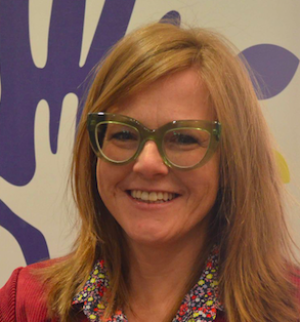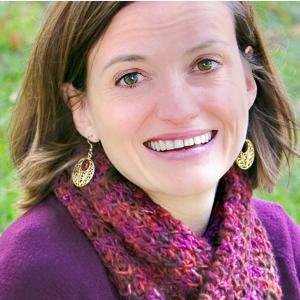Resources

Like so many others during the pandemic I picked up a new hobby. Breadmaking was already claimed by two others in my family, so I decided to turn to houseplants. Gardening has always been therapeutic for me, so I sensed I would like getting my hands dirty indoors as well, and I had always found beauty and a sense of peace in homes filled with a variety of plants.I began pretty haphazardly, just buying plants I found on sale and watering them when they looked bad. I soon learned that water isn’t always the best solution for a dying plant. There is such a thing as overwatering, and I learned that lesson the hard way—by killing a lot of plants.It probably took me a year or so to learn the needs of different plants; for example, how much sun, humidity, and water they require. Now almost four years into my new craft, I rarely kill a plant. My eight-year-old daughter even recently declared: “Mommy, it’s starting to look like a jungle in here!” That’s when I knew I was getting good and that I had achieved the aesthetic I was going for.I’ve learned a lot of good lessons in becoming a plant person. In fact, I was reminded of my deleterious overwatering the other day, when I was making plans for my sabbatical this coming fall.This sabbatical will be the first one I’ve ever had the luxury to take, and to say that I’m looking forward to it would be an understatement. I’ve been teaching for fourteen years, and for the last two years I have been increasingly involved in administration.My fairly new administrative work has not left me much time for research. And when I think of that area of my academic life, I think of a wilted, dried out plant. I’ve pulled as much life out of my previous research as possible, and it’s parched.Always an overachiever, I know my tendency will be to over-plan for and overschedule my sabbatical time. I intend to write a new book. I want to read, research, and write; and I want to travel in Europe for my research. I also want to take pictures and videos during my travels for my classes.When I was charting this all out the other day, I was overwhelmed. My (too-high) expectations left me feeling panicky. I also started feeling the pressure of thoughts like: “Given the landscape of higher education, this might be your first and last sabbatical.” In short, I was setting myself up for burnout!Of course, this defeats the point of sabbatical. Isn’t it supposed to be a magical time in which one can finally achieve the sweet balance of rest and productivity?But how does one achieve this? I suppose the answer is different for everyone. It’s like caring for the different needs of different plants.Taking a tip again from my plants, I reflected on the following questions:1) What do I really need right now?What I need is some time to slow down and rest. I need some time to breathe, to re-center myself. I need to establish a new workplace (away from my institutional office), where I can be free from distractions. I need an easy routine with the time to be creative and to explore new ideas.2) What do I really want?What I want is to have some new life breathed into my intellectual project. I want to use the privilege of this precious time wisely. A semester free of classes and meetings provides me with the opportunity to travel for my research. I’ve always wanted to visit the monastic sites and places in Germany of the medieval writers who I study, and to talk and pray with the contemporary nuns that currently live there. Now I can!I also want to get several chapters of a new book written. This “want” competes with the other. Of course, planning for a trip and taking it will hinder my writing productivity, at least in the short term. I’ve had to come to grips with that fact, and remind myself that I can write anywhere and anytime. I can get some writing done on sabbatical, and continue the rest later.3) What will sustain me?What I need for my scholarly labor to be sustained, during this sabbatical and going forward from it, is for it to engage my intellectual passions. My last book was published four years ago. The world has changed since then, and so have I. One of the first things I need to do before starting in on a new research project is to give myself some time to reflect on some perennial questions. I have bookmarked Dr. Nancy Lynne Westfield’s blog “Articulating Your Intellectual Project,” which contains questions like: What is the intersection of your gifts/talents with the mighty needs of the world? At the end of your life, when you look back over your long and illustrative career, to what did you say yes?I plan to use the questions she provides therein to help encourage and bring about clarity for the focus of my project and its intent.And then I plan to get to work (at a restful pace)!

I am currently on sabbatical. I am grateful for a little time to be excused from meetings and classes, to devote to my own rest and creative research. I recognize the privilege of teaching at an institution that has regular sabbaticals for all teaching faculty (thank you, Columbia Theological Seminary!), an increasingly rare situation in higher education, and one that is almost unheard of in other professions. It is an opportunity for pause that I wish for all working humans. During these past few months, I have rested and read, traveled to visit family, and embarked on a new research project close to my heart. It has been both deeply restful and oddly disorienting. Even as I have encountered the nourishment and the counter-cultural challenge of sabbatical, my colleagues at Columbia have been confronting similar themes as they engaged together the fine new book by my colleague Chanequa Walker-Barnes: Sacred Self-Care: Daily Practices for Nurturing Our Whole Selves. Dr. Chanequa has helped me name both the gift and the oddness of this sabbatical season, as a practice that is about “sacred self-care” as well as (and therefore) care for the wider community in which I live. Importantly, Dr. Chanequa encourages me/us to see self-care not as selfish, but as grateful response to God. As she says, “Our self . . . is God’s first and best gift to each one of us. How we care for ourselves is our response of gratitude for that gift” (16). In her discussion of sabbath as a necessary part of self-care, she reminds us, “Sabbath is a commandment right along with ‘Thou shalt not kill’ and ‘Thou shalt not steal’. . . . At its core, Sabbath is about ceasing from labor. . . . Sustaining self-care requires ceasing” (177). To make room for fresh ideas and fresh energy, I have to cease doing some things, at least for a season. With both this book and my own recent experience on my mind, here are the lessons that I am learning from sabbatical: Sabbatical is disorienting. This is especially true this time around, as I no longer have children living at home to organize my days, and I did not come into sabbatical with a specific project already laid out to structure my time. I am without all the factors that usually and formerly structured my time: teaching, meetings, active parenting. Who am I? Without academic and parental external demands, I gravitate toward other homely demands to provide a sense of accomplishment: laundry, groceries, walking the dog. This is not to dismiss the importance of tasks traditionally sidelined and undercompensated as “women’s work.” Indeed, I concur with Kathleen Norris that God dwells in such “quotidian mysteries.” But it does highlight my tendency to find worth in what I have accomplished in a given day, what I can check off the list and pronounce “done.” Sabbatical has forced and invited me to ask myself anew: What is it that I need to do—each day, in this season? Dr. Chanequa points out that “Many of us have been taught that productivity is a sign of blessedness.” Guilty as charged. She goes on, “One way to maintain appropriate boundaries is to get clear about what is actually our work. In other words, what is required, and what is desired? Whose requirement or desire is it?” (96). To answer this question, sabbatical has helped me practice clearing space in my schedule—and making this space visible to myself on my daily calendar. Too many little blocks on the calendar inhibit my creative work. At the same time, some regular embodied practices are necessary. Blocking out mornings for research and writing, for instance, has helped me focus, so that I can then turn to other tasks in the afternoon. The puzzle of just enough structure is one I am still working out. In particular, I have rediscovered the practice of free reflective writing every morning. Just two pages by hand, in a journal with good paper, before I turn on the computer. This practice enables me to ponder on paper, just for myself, without the omnipresent editor that lurks off the margin when I am typing. And it has helped me connect different facets of my life and work. For example, my reflections in my previous blog emerged from just such morning reflections, on a recent experience of being a guest and its surprising connection with my own research questions. What will I bring back to my teaching from this sabbatical time? I might encourage students to try this practice of writing for a few minutes every morning, separate from specific assignments. As it has done for me, it might help them integrate what they are reading and learning in the classroom with their lived experiences. As a byproduct, it may also therefore nourish the theological integration that is a major learning goal in our introductory theology classes. In the end, sabbatical leaves me with this ongoing question: How can I be a teacher who does not define my students by their work, but truly teaches and embodies the truth that our worth precedes our work? How can sabbatical and self-care strengthen my explicit recognition of students as already shining images of God in the world, before they ever put pen to paper?